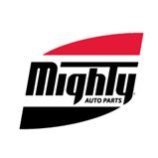-
Welcome to Auto Parts Forum
Whether you are a veteran automotive parts guru or just someone looking for some quick auto parts advice, register today and start a new topic in our forum. Registration is free and you can even sign up with social network platforms such as Facebook, X, and LinkedIn.
Selling Oil Filters: The Unfiltered Truth
-
Similar Topics
-
By CarPartAU
Are you looking for some stores to buy used or new car parts? If so, then Car Part is the place for you. Rather than sharing a limited list of stores, we at Car Part have come with the list of the best link hidden, please login to view. These sites will connect you with a large number of car part sellers across Australia. Without wasting much time, fill out the form and click send a request button. To know more, visit us today.
-
By Carl
I have 21 Fram automatic transmission filter kits for sale. Plus I have five other non-Fram kits for sale. These are all new kits. Cleaning out the shop and want to get rid of them. I am asking 450.00 for all. I know I have a lot more than that in them. If someone is interested please let me know. Shipping is extra if you arent near by. Thank You Carl
-
By jack wilson
As a truck owner, maintaining your vehicle's health is crucial to its longevity and performance. One of the most important aspects of truck maintenance is regular oil changes. In this blog, we'll explore the benefits of regular truck oil changes and answer the question, "What are the benefits of regular link hidden, please login to view?" Here are the top 8 facts you need to know.
-
By Mighty Auto Parts
The post
link hidden, please login to view appeared first on link hidden, please login to view. Nothing is more frustrating for the vehicle owner than a puddle of oil on their carport fl oor or the stench of oil on a hot engine or exhaust system following a lube service. It is equally frustrating for the lube shop asthey must correct the problem, losing billable labor time. We have seen customers […]
The post
link hidden, please login to view appeared first on link hidden, please login to view.
link hidden, please login to view





Recommended Posts
Join the conversation
You can post now and register later. If you have an account, sign in now to post with your account.
Note: Your post will require moderator approval before it will be visible.